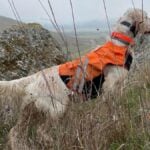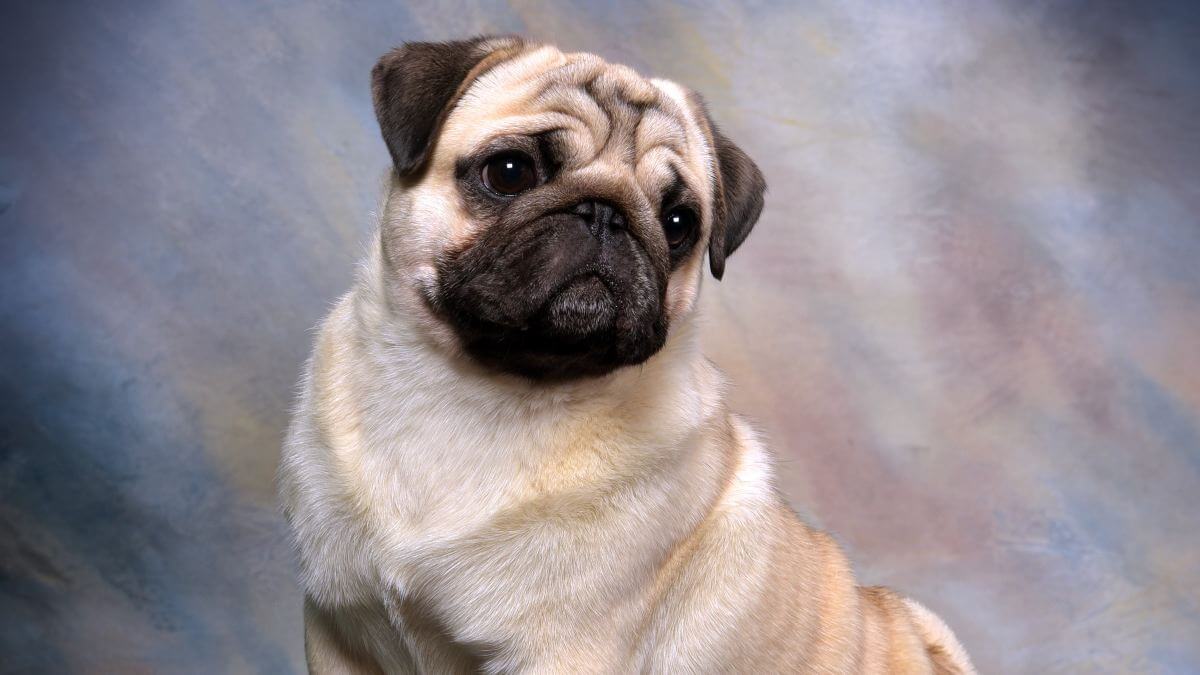
Home » The Pug Today… From a Breeder Judge’s Perspective

This article was originally published in Showsight Magazine, June 2014 issue.
Pugs have come a long way in the past few years. The good news is that our breeders are better today than ever in aligning their breeding programs to our Pug Standard. This means judges new to Pugs get to see dogs that, across the board, are consistently typey. Breeders are doing a fantastic job building strong breed type that is more cobby and square with a big round head and a tight curly tail.
We are not seeing as much extreme type in the ring these days, and by extreme, I mean Pugs that are longer and larger than the Pug Standard, as well as Pugs that are under 14 lbs. and too small to even be in the ring. Our breeders are truly focused on creating a Pug that is compact—multum in parvo.
We all know there are no perfect Pugs, and while breeders strive for perfection, there is always work to do. For example, we should not be able to see a waistline when viewing a Pug from above, and we should not see a tuck-up on the side view. When viewed from the rear, a Pug without a waist will have a square appearance. Breeders’ focus on improving top lines has paid off, with significant improvement displayed for all to see as the Pug moves around the ring.
Our Pugs’ headpieces are stronger than ever, but we still see Pugs whose ears are too large for their heads. When alert, the Pug should exhibit button ears that are level with the top of the skull, and the tip of the ear should be level with the middle of the eye.
Speaking of Pug eyes, there is a misconception that a light, clear eye is a healthy, correct eye. One of the most endearing parts of the Pug is the required dark, round eye. Light eyes do not give the proper expression in the breed, and they are distracting. A light eye, clear or not, is incorrect.
Coat color is always a big topic in judging Pugs. I believe strongly that judges should judge the overall Pug and only then consider coat color. Judge every part of the dog first—does it have a high-set tail, beautiful type, and a gorgeous head? Exhibitors present a number of variations of fawn. Just remember, when judging the Pug, there needs to be a contrast between the black of the face and ears and the fawn coat.
Every new Pug judge must pay close attention to how they examine the bite, as it is a major concern for exhibitors. In fact, it can be a deal breaker for exhibitors concerned about their dogs. There is no need to see the teeth or handle the mouth. To examine the bite on a Pug, put the thumb in front of the mouth to feel the slightly undershot bite. It is easy to intimidate any Pug, but especially a puppy, so I speak to them gently, approach slowly, go over the Pug’s body, and examine the bite last.
I’ve had judges ask me about wrinkles down the back. The key thing to remember when examining the Pug is to get your fingers under the wrinkles to see if the top line is level.
Our breeders have done an outstanding job breeding black Pugs in the past few years! We see an increasing number of beautiful heads and Pugs that are just as typey as fawns. Competition is difficult with black Pugs, however, because usually there are more fawns in the ring than blacks, and the quality of fawns has also improved, making it difficult for blacks to stand out in a crowd of fawns.
I’ve heard from Pug exhibitors that movement doesn’t matter because Pugs are a toy breed. Really? A Pug moving away from the judge must be strong and free through the hocks and stifles, with no twisting or turning of the rear—even though it is common to see this type of movement in the ring. And there is nothing quite so lovely as watching a Pug with correct side movement as it moves effortlessly around the ring.
My advice to new Pug exhibitors is to remember to show your Pug at a collected trot on a loose lead. There is nothing more disappointing for a judge than to see a Pug strung up, gasping for air, as it is pulled around the ring. Exhibitors see handlers do it, so they think it is correct and mimic them.
I’d also like to see more Pugs in the ring that are shown without a lot of scissoring and sculpting. The Pug is a natural breed and should appear that way in the ring.
Currently, the Pug Dog Club of America’s Illustrated Standard Committee is finalizing plans for the first update to the Standard since 1997. The new version will include more illustrations to better represent the Pug Standard.
On the health front, we are working on cures for eye diseases, such as Pigmentary Keratopathy, highlighted by the current research conducted by Dr. Amber Labelle at the University of Illinois. We continue to work on eradicating Pug Dog Encephalitis with research in progress at the University of Georgia College of Veterinary Medicine. There is interest, both in the USA and abroad, in researching the rear limb ataxia/paralysis that is not uncommon in the breed. Collaborations and fact-finding are in the early stages, but we hope to gain a handle on this problem in the coming years.
I’d be remiss not to mention sportsmanship. My single best advice to all dog show exhibitors, new or not, is to understand the definition of what it means to be a “good sport.” Too many exhibitors have lost touch with what good sportsmanship really means.
In the end, like all purebred dogs, Pugs are bred to be companion dogs, and so let’s not lose sight of that when exhibiting, judging, breeding, and most of all, living with and loving our Pugs.